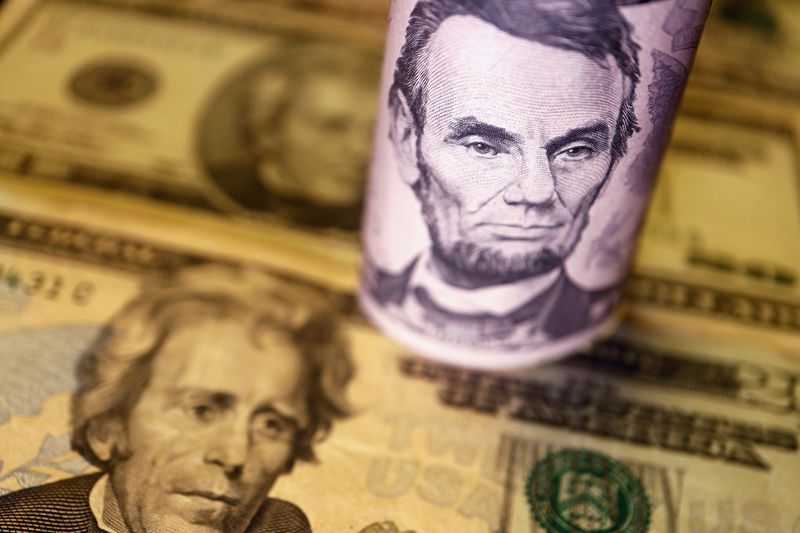By Saqib Iqbal Ahmed
NEW YORK (Reuters) – Some investors are zeroing in on the battered currencies of commodity-producing countries such as Norway and Australia to take advantage of more potential weakness in the dollar, which has recently wobbled on signs the Federal Reserve will soon end its rate-hiking cycle.
Many commodity currencies suffered this year when prices for oil and other raw materials fell from their 2022 peaks amid expectations that central banks’ fight against inflation would hurt global growth and crimp demand for commodity exports.
However, growth in the U.S. and some other countries has proven resilient and strategists increasingly believe a global economic downturn is unlikely. While that’s driven rallies in risk assets such as stocks, raw materials prices and some commodity currencies have been slower to respond.
Some investors believe there’s an opportunity to buy on the cheap. Adding to the allure are expectations that the Fed’s rate increases – which helped lift the dollar to a two-decade high last year – are reaching a conclusion.
“Commodity currencies are still the currencies that will probably have the most upside potential, purely from a valuation perspective,” said Francesco Pesole, FX strategist at ING Bank, who favors the Norwegian crown and the Australian dollar.
The bullish view on commodity currencies gained traction in recent days after leaders in China – the world’s leading commodity consumer – on Monday pledged to step up policy support for the economy.
Prices for oil, copper and other raw materials rose on the news, while commodity currencies such as the Australian and New Zealand dollars edged up. Brent crude is down 3% year-to-date.
Meanwhile, the dollar could see more weakness if the Fed signals that it believes U.S. inflation will continue cooling, making future rate increases less likely.
The U.S. central bank is expected to announce a 25-basis-point rate increase at the conclusion of its monetary policy meeting on Wednesday, but investors believe the chances for more tightening beyond that are slim.
BARGAIN BIN
While some commodity currencies have enjoyed strong runs against the dollar this year, many bullish investors are looking for winners among the laggards.
Those include the Norwegian crown. The second worst-performing G10 currency against the U.S. dollar this year, the crown is down nearly 3% against the greenback, with analysts pointing to lower energy prices and a central bank that until recently had raised rates at a slower-than-expected pace.
Some other commodity currencies have seen similar declines, with the New Zealand dollar down 2% and the South African rand down 3%.
A Deutsche Bank analysis of currency valuations based on factors including terms of trade and gross domestic product shows the Norwegian currency undervalued against the U.S. dollar by more than 30%, while the Australian dollar is about 20% from fair value.
Thanos Bardas, senior portfolio manager at Neuberger Berman, believes the Australian dollar could appreciate if global growth is better than feared and commodity prices rise. A hopeful sign came Tuesday, when the International Monetary Fund raised its 2023 global growth estimates slightly.
“When you think of all the asset classes, the one that did not participate in this exuberance over a soft landing is commodities,” Bardas said.
Commodity currencies are far from the only way to play further dollar weakness. Deutsche Bank’s model shows the Japanese yen – which is off 7% against the buck this year as the Bank of Japan has kept rates ultra-low – to be among the world’s most undervalued currencies against the dollar.
“Most (valuation models) are screaming over-valuation for the U.S. dollar,” said Bipan Rai, North America head of FX strategy at CIBC, who believes the dollar is overvalued against currencies including the Japanese yen, euro and British pound.
Strategists, however, cautioned against putting too much stock in valuations, especially for short-term moves, because currencies can often stray from their fair value for months.
In addition, betting against the dollar carries its own risks. The U.S. currency could rebound if inflation proves stubborn, or the Fed is more hawkish than investors had priced in.
Still, some strategists believe there is plenty of room for the dollar’s peers to appreciate further.
Jane Foley, head of FX strategy at Rabobank, is upbeat on the currencies of Sweden and Norway. Given how undervalued they are, any sign of economic strength in the respective countries could lift the currencies, she said.
“They’re beginning to turn around. And I think they could have further to go,” she said.
(Reporting by Saqib Iqbal Ahmed; Editing by Ira Iosebashvili and Leslie Adler)
